So you’ve bought your new inflatable boat, only to realize the valve looks way different than the one on the inflatable raft you had when you were a kid.
Reading the instructions, you realize it is a Halkey-Roberts valve. But how do you use it?
What on Earth is a Halkey-Roberts valve?
The Halkey-Roberts valve (also called HR valve) is a one-way check valve. It makes the inflation and deflation of inflatable items as quick as possible, because it does not let air out while you are pumping into it.
HR valves are the most popular valve types you’ll find on high-end inflatable boats.
As you can see on the image below, it has 3 core elements:
- The base, which is built into the rubber tube (far left)
- The middle part, which is screwed into the base (mid)
- The cap, which is screwed onto the middle part (far right)
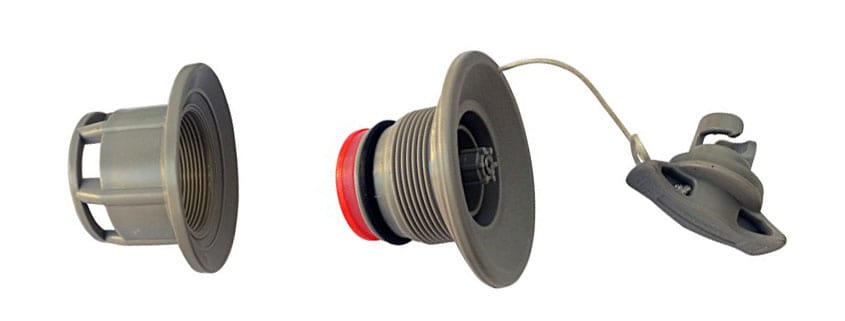
The middle part houses the heart of the HR valve, which is responsible for the efficient and reliable operation of the valve.
How does a Halkey Roberts valve work?
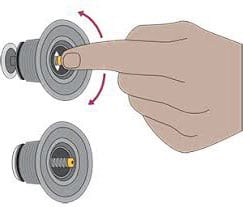
HR valves are a Godsend when it comes to inflating and deflating a tube. Let’s have a look at how they work in real life.
Halkey-Roberts valves have a pushpin (spring) inside the middle part of the valve. This pushpin has 2 positions:
- up
- down
Up position – Inflation
You inflate the tube when the pushpin is in the up position.
In the up position, air will not escape the valve, but the valve will let you pump air into it. Simply hook a pump into the valve and inflate the tube. Once you are finished inflating the tube, simply disconnect the pump, and the air will not escape the tube with the pushpin in the up position.
Down position – Deflation
You deflate the tube when the pushpin is in the down position.
In the down position, the valve will open completely and let the air escape rapidly. This position should only be used for deflating your tube, even though you can still pump air into it in this position.
TIP: Even though air escapes quickly in the down position, having a pump with a deflation feature will suck out all of the air in no time.
How do you get the HR valve pushpin into the up/down position?
Halkey-Roberts valve pushpins have 2 methods of operation.
With one type, you simply push the valve to pop up into the up position, and again to snap it into the down position.
With the second type, you need to twist the pushpin slightly in either direction to lock it into the down position. To bring it back up, twist the pushpin slightly, and it should pop right back up.
Keeping air inside the tube
After you are finished inflating your boat, make sure the HR valve pushpin is in the up position.
Screw the top into the middle part, and you’re ready to go.
What kind of pump works with a Halkey-Roberts valve?
You can use pretty much any pump with an HR valve, provided that you have a Halkey Roberts valve adaptor like these.
HR valves are very popular, so most pumps will come with one.
Here are the pumps I have used and can recommend.
HR valve losing air
It is very important that your HR valve seals tightly. If it does not, air will escape.
You’ll want to do 3 things if your HR valve is leaking air.
- Unscrew the middle part from the base.
- Clean the valve and the surrounding rubber to make sure there is no sand, glue, or dust caught in the threads. This is the number 1 reason why Halkey Roberts valves lose air.
- Re-thread it carefully, making sure it is not cross-threaded.
If the valve is still losing air after cleaning, you probably need to replace it.
Also, you might want to read this article on how to find air leaks in inflatable boats.
Here is an informative video on how to clean and replace an HR valve.
Halkey-Roberts valves sizes and replacement
The most common sizes of HR valves are:
- old short (690BV)
- new short (690NSBV)
- old long
The difference between the old vs the new versions is that with the old ones, it was too easy to tweek the stem and get an air leak. The new ones have an upgraded mechanism and are also a bit longer.
For this reason, the old and new versions are not interchangeable. You cannot replace an old short with a new short. Nor can you screw a short into a long.
If you find your’s to be defective, you should first check whether the manufacturer of your inflatable boat supplies replacement valves.
If they cannot provide a replacement, your best bet is to go to the Halkey Roberts valve page on Amazon, and look through the sizes you can get as compared to the one you are replacing
You may need to replace the entire valve, including the base on the inside of the tube.
Don’t worry though, replacing the valve is easy. Here is how.

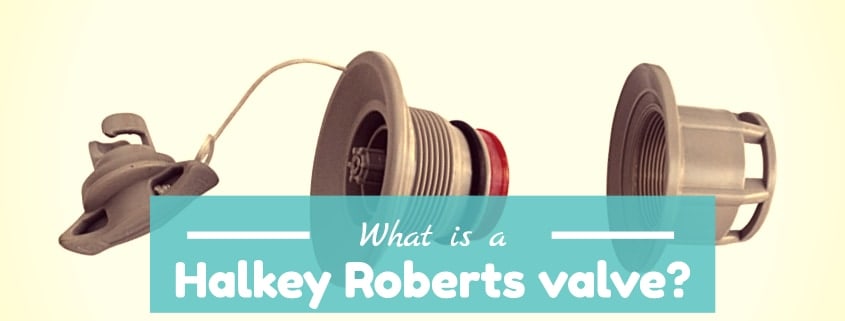


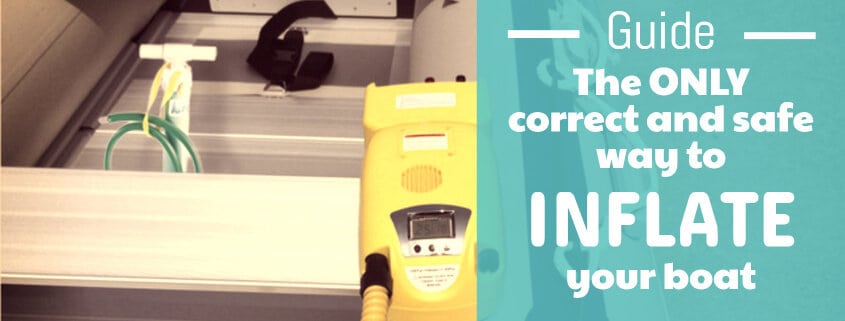
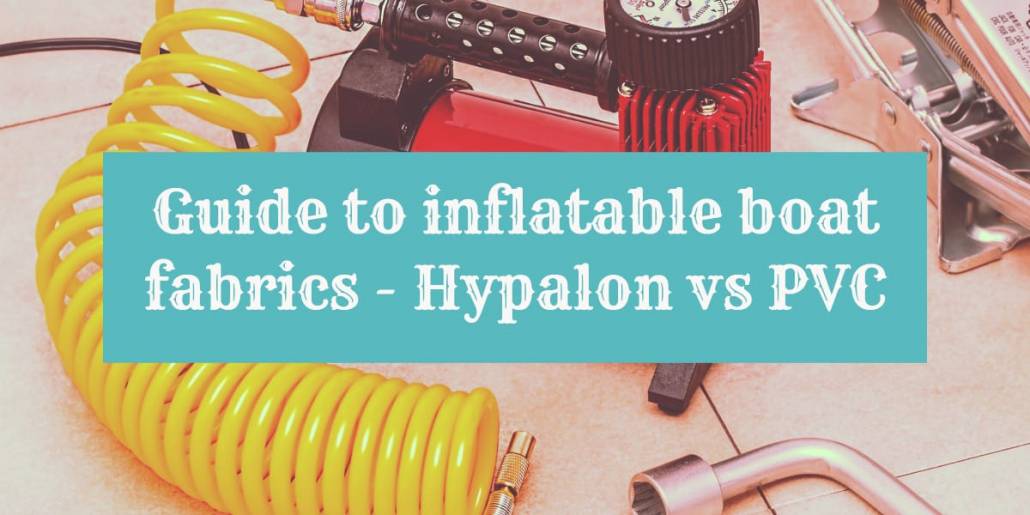
Do Halkey Roberts adapter lengths make a difference? I notice long ones and short ones for sale, and if I were to assume, I would think long/taller adapters might be too tall to make a seal with the Halkey Roberts valve?
Thank you!
Hello Tom.
As a first time inflatable owner, your website caught my attention.
I you Pump reviews, there were specific mention of pumps with HR valves; others not so.
Does this mean that only pumps wherein HR are mentioned, have them or…?
Cheers Tom
Hi Gregg, I try to list every detail of the pumps. Most of them have the HR valve adaptor, as it is a widely used valve type. Which pump are you asking about specifically?
Thanks for creating the page. I have a brand new West Marine Dingy and it is losing air overnight. Only 1 out of 5 chambers I suspect it to be the Halkey-Roberts valve. Now I sorta know how they would and assembled and will try a few things to fix the problem.
Put some foamy soap water in and around the closed valve, and if it bubbles, you’ll know it’s leaking air there.